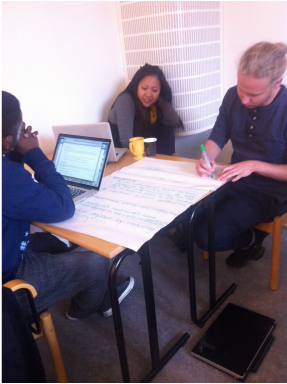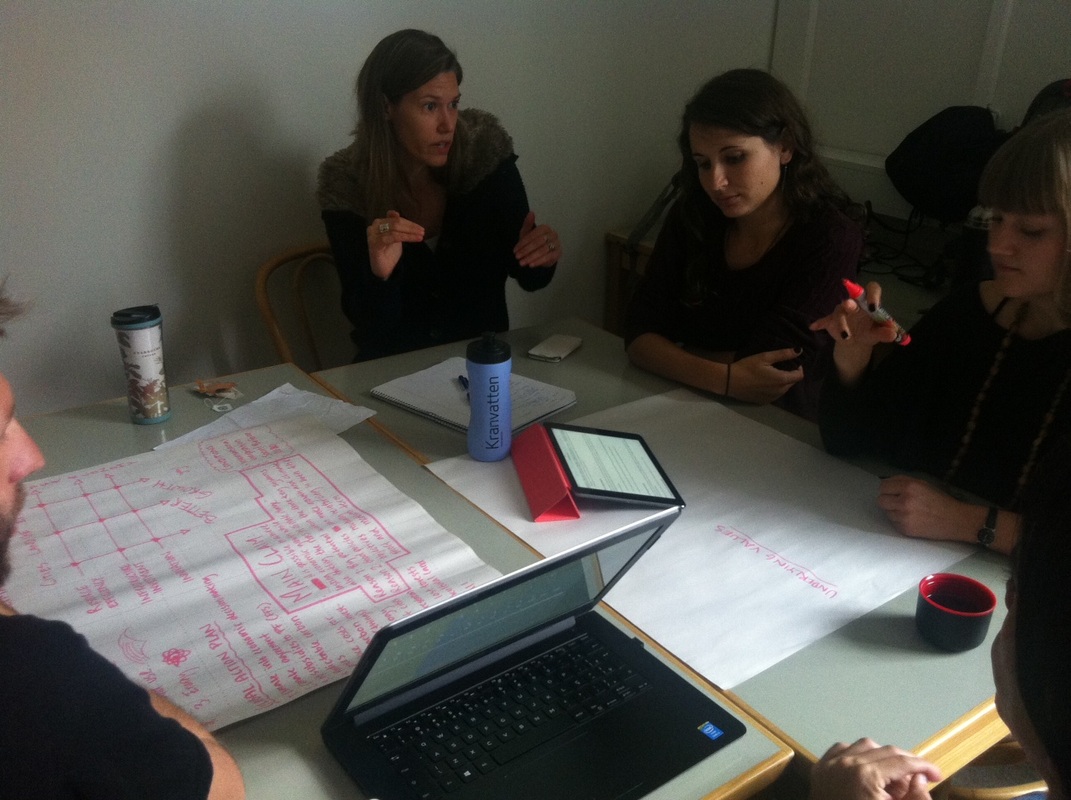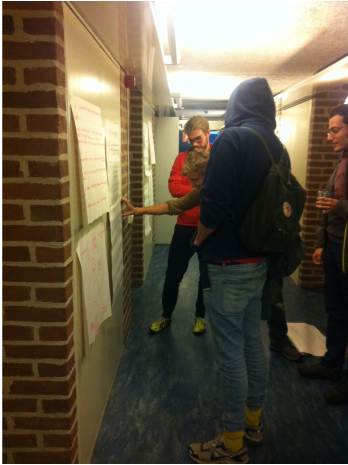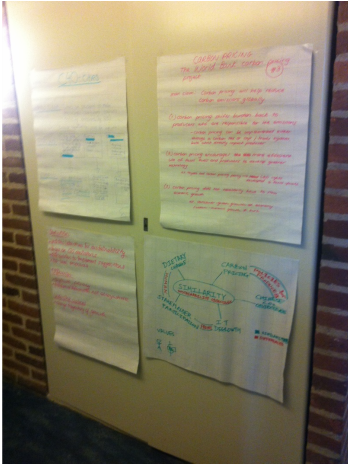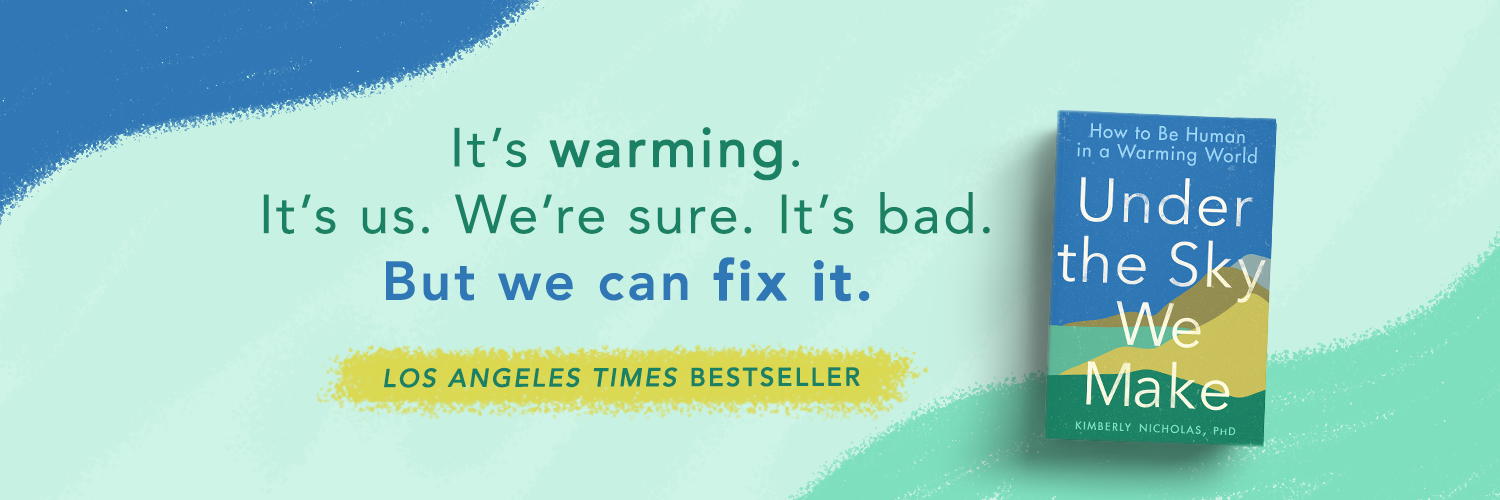Climate Change "We Can Fix It World Café" 2016
Welcome to the World Café 2016!
This is an archive page- see the latest page here.
Inspired by student feedback, this is a 3 hour activity where students analyze, compare, and present climate solutions proposed and now underway from governments, non-governmental organizations, businesses, religious leaders, individuals, and more.
The goals is to inform and empower as well as gain a critical perspective on climate change action. You can read more about the motivation for this activity here, or dive right in below with preparation, instructions for running the World Cafe, and a reading list.
Student or teacher feedback on the activity, or suggestions for additional solution resources, are welcome to @KA_Nicholas on Twitter.
Past climate solutions archives with different reading assignments: 2014, 2015.
This is an archive page- see the latest page here.
Inspired by student feedback, this is a 3 hour activity where students analyze, compare, and present climate solutions proposed and now underway from governments, non-governmental organizations, businesses, religious leaders, individuals, and more.
The goals is to inform and empower as well as gain a critical perspective on climate change action. You can read more about the motivation for this activity here, or dive right in below with preparation, instructions for running the World Cafe, and a reading list.
Student or teacher feedback on the activity, or suggestions for additional solution resources, are welcome to @KA_Nicholas on Twitter.
Past climate solutions archives with different reading assignments: 2014, 2015.
Preparation
Teacher Preparation
Student Preparation
- This activity is designed for a three-hour seminar (possible to modify for two hours by doing only parts 1 and 2 below, and skipping the poster session). I designed it for the LUMES master's program, but it should work for other levels of students as well.
- Select as many reports as needed so that there will be four students discussing each report (I used all 12 reports below for my class of 46 students, with 10 groups of 4 students and 2 groups of 3 students; with 3 students, combine timekeeper & facilitator roles).
- Assign students (or have them sign up) to read one of the recent reports below, which offer different proposals for addressing climate change.
- Materials: Post-it with table number (1-12) to later hang on the wall; flipchart paper; markers; tape to hang posters.
- Arrange classroom tables to seat groups of four, and give each table a Post-it with a number corresponding to the report students will read (#1-12). Each table will need a large piece of paper (flipchart or butcher paper) and markers for drawing their posters.
- Give students the instructions below ahead of time, and start class with a brief overview as reminder.
- During the World Café, circulate and answer questions.
- Announce when there are 10 minutes left to make sure all students complete their poster.
- Provide tape or thumbtacks for students to hang posters in a corridor or classroom where they can all circulate for the poster session.
- During the first break, provide fresh paper for each table to make a new poster in the second session.
- During the poster session, remind students the order of poster presentation (10 minutes each for the Synthesizer, Facilitator, Timekeeper, and Visualizer to present their poster from Part 1, while the other 3 group members circulate and learn about other posters.) Announce when it's time for students to switch roles every 10 minutes, so all get a chance to present and to circulate.
Student Preparation
- Before class, please read at least the section listed from your assigned report. You're encouraged to browse around on the website and investigate more if you like.
- Please bring a copy of the report (hard copy or electronic) to class with you reference during your discussion.
Part 1: One Solution (45 minutes)
|
- Start by assigning each member of the group one of four roles:
- Facilitator- start and keep the conversation moving, ask questions, make sure all have an equal chance to contribute.
- Visualizer - take the lead in capturing the key ideas you discuss in words and drawings on your poster.
- Timekeeper - keep an eye on the clock, redirect conversation if it is getting off topic, move ahead to address all the discussion points.
- Synthesizer - keep an eye on the big picture, and offer a summary of the group's conclusions for each question to help the Visualizer make the poster as you go along.
Discussion questions- Part 1:
- What is the main claim of the report? What reasons and evidence are given to support the claim?
You may wish to use the worksheet based on the paper by Ladaea Rylander of Lund University Academic Support Centre to help you diagram and discuss them. Remember that a claim is the central argument or thesis statement (which could be true or false); reasons articulate the logic of a claim and give relevant answers for the question of why a claim might be true; and evidence provides examples and data that prove the correctness of the reasons. - Discuss the proposed plan in terms of its effects the elements of the Kaya Identity explaining the drivers of CO2 emissions:
Remember that the four terms driving environmental impact are:
Population (number of people, or "capita" to make the units cancel out)
Wealth (GDP/capita)
Energy Intensity of GDP (Energy consumption/GDP)
Carbon intensity of energy (CO2/energy consumption)
- Consider the author of the source. How does this influence your evaluation of the proposed plan? (For example, what kind of organization do they work for, and how do you think this influences their perspective?)
- Now you've discussed the "They Say" piece that begins any critical academic conversation (Graff and Birkenstein, 2010, They Say/I Say: The Moves That Matter in Academic Writing). What do "you say"- what is your response to the report? What are its strengths and weaknesses? If you were a science advisor to policymakers, would you support the proposal?
Part 2: Many Solutions (45 minutes)
|
- Start by assigning new roles to each person.
- Each student should briefly summarize the key points of your report to this new group (aim for 3 minutes each). You may want to refer to your notes, and show any key figures from the report that help you make your point.
- Discuss the questions below and make a second poster that answers them. Be sure to put your names on the poster, and list which four proposals you were discussing.
- During the break, please hang your second poster on the lower panels in the corridor.
- Based on your role in the first discussion group, you'll take turns presenting your poster to other students.
Discussion questions- Part 2:
- What are the similarities and differences between the proposals? What areas of synergy or conflict do you see between the different proposals?
- What underlying values does each proposal represent? (Consider, for example, arguments promoting equity, development, growth, etc.)
- Does your group agree on a strategy that seems the most promising out of the ones you've discussed? Why or why not?
Part 3: Poster Session (45 minutes)
First 10 minutes: The Synthesizer from Part 1 presents their poster, while the other 3 group members circulate and learn about other posters. Second 10 minutes: The Facilitator from Part 1 presents their poster. Third 10 minutes: The Timekeeper from Part 1 presents their poster. Fourth 10 minutes: The Visualizer from Part 1 presents their poster. |
Readings: The Proposed Solutions
Remember: the Paris Agreement (Article 4) says the world must "achieve a balance between anthropogenic emissions by sources and removals by sinks of greenhouse gases in the second half of this century, on the basis of equity, and in the context of sustainable development and efforts to eradicate poverty." For more on this goal and its critical importance, see this WRI explainer (based on the previous term "climate neutrality" but the ideas remain the same).
You may want to read this short Washington Post blog, "The solutions to all our problems may be buried in PDFs that nobody reads."
The solutions are organized by the themes of global/technical (#1-5), sectoral (#6-8), and values/civil society (#9-12).
Note that descriptive text in quotations is taken directly from the websites found in the hyperlinks.
- Pathways for 100% renewable energy
Several organizations are focusing on how to get to 100% renewable energy. These include:
"The Deep Decarbonization Pathways Project (DDPP) is a global collaboration of energy research teams charting practical pathways to deeply reducing greenhouse gas emissions in their own countries. It is predicated on taking seriously what is needed to limit global warming to 2°C or less."
The Solutions Project has a plan for 100% renewable energy for 50 US states and 139 countries. "The Solutions Project accelerates the transition to 100% clean, renewable energy for all people and purposes. To achieve this mission, we engage the public, celebrate and convene leaders, and advance partnerships and policies that make strides on the road to 100%."
Check out these two groups and compare their approaches.
Read:
Deep Decarbonization Executive Summary 2015
Browse the Solutions Project website, including their Resources section. Pick 3 countries to compare their renewable plan.
- Carbon pricing
"For the first time Heads of State, city and provincial leaders have come together with the support of leading companies to urge countries and companies around the world to put a price on carbon pollution.
These global leaders have taken steps to price carbon, through emissions trading programs, carbon taxes and fees, and other pricing mechanisms, that provide incentives to invest in a greener economy."
Read: Carbon Pricing Leadership Coalition website and "Shifting the Debate" report.
Read the introductory page, "Pricing Carbon," and the summary of the new carbon pricing report, as well as the Executive Summary and Introduction of the "State and Trends of Carbon Pricing 2015."
Optional: You can read a quick overview and listen to a 6-minute radio interview with Rachel Kyte, Vice President of the World Bank Group and Special Envoy for Climate Change here. "If we want to drive carbon out of the economy, we're going to have to put a price on it." - Near Zero: scientific policy analysis
"Near Zero produces scientific assessments of energy and climate issues. Near Zero projects use innovative online tools to engage experts on the best opportunities for progress toward near-zero emissions, based on scientific data and expert judgment. A guiding principle is to reveal where experts agree and disagree and why, highlighting areas of consensus and controversy rather than advocating any one perspective. Near Zero integrates this expert knowledge with quantitative modeling and analysis to demonstrate the implications of different views and potential choices. The result is a dynamic digital cache of credible, impartial, and actionable information to support policy and investment decisions."
Read: Website materials, including About + 3 executive summaries that most interest you + 1 full report (ca. 20 pages). - Implement the Paris Agreement
The agreement has been adopted (12 December 2015) and signed by most member countries (most recently by the EU on September 30, 2016), and is very close to becoming active- a tremendous achievement. Still, making the terms of the agreement reality remain a challenge. Here's a pathway to do so.
Read: Blog post summary from WRI, and skim the full report. - Business Leadership
LUMES alum Matt Banks heads this program for World Wildlife Fund, aiming to get businesses to reduce their emissions 3% per year to be on line for the net zero goal.
Read: The 3% Solution: Driving Profits Through Carbon Reductions report. - 4 pour 1000
"The aim of the Initiative is to demonstrate that agriculture, and agricultural soils in particular, can play a crucial role where food security and climate change are concerned... to engages stakeholders in a transition towards a productive, resilient agriculture, based on a sustainable soil management and generating jobs and incomes, hence ensuring sustainable development."
Read: project website (Understand, The Issues, and Take Action) and PDF description. - Seeds of a Good Anthropocene
"Seeds are existing initiatives that are not widespread or well-known. They can be social initiatives, new technologies, economic tools, or social-ecological projects, or organisations, movements or new ways of acting that have that appear to be making a substantial contribution towards creating a future that is just, prosperous, and sustainable."
Feel free to contribute your own seed!
Read: Project website- Read the "About" section and check out the database - pick 2-3 categories from the left-hand menu (e.g., "climate change") and read about at least 2 of the seeds listed there to share with the group.
Optional: A short paper describing this project has just been published in Frontiers in Ecology and the Environment. - Climate KIC
The EU's main climate innovation initiative, with programs for students, businesses and governments. They also support the excellent Elephant podcast, with in-depth discussions with climate researchers and practitioners (optional listen).
Read: through the website thoroughly, including sections on the Climathon.
- cChange and cChallenge
"cCHANGE brings together a large body of knowledge on both climate change and transformation, helping individuals and organizations to identify the patterns and possibilities for contributing to the types of responses that are called for in a changing climate. cCHANGE helps individuals and groups to see climate change from new perspectives."
Read: project website, including 1-minute video, 3 spheres of transformation, and perspective pieces. Read about the cChallenge program here.
- Divestment
The divestment movement, to dis-invest in fossil fuels, is rapidly gaining traction.
Read:
Start here with the Beginner's Guide to Divestment, then read the websites of project founder 350.org through their Fossil Free campaign, including links and videos. Recently, The Guardian newspaper launched its own divestment campaign- read about it on their website here. Make sure you understand how it works, and the arguments for and against divestment as a climate strategy.
Optional, for more background: Author and professor Bill McKibben (my interview with him here) started the nonprofit group 350.org in 2012, launched with the publication of "Global Warming's Terrifying New Math" in Rolling Stone. It has since grown to encompass campaigns including the People's Climate March (held September 21, 2014), local climate leadership trainings, and the divestment campaign urging institutions like universities and churches to divest (dis-invest) from fossil fuel investments. - Religion
Can faith change the climate conversation?
Read:
This short recent news story about the Pope's call for urgent action on climate change, as well as this Analysis of the Encyclical (Laudato Si) by Pope Francis (full 180 page document is not required)
This short blog post analysis of climate statements from religious as well as NGO, scientific, and business groups by LUMES alum Marius Sandvoll Weschke and Kim Nicholas.
Optional:
A Buddhist Declaration on Climate Change
Islamic Climate Declaration
A Rabbinic Letter on the Climate Crisis (Aug. 2015). - Personal responsibility
A growing number of climate researchers and activists are aligning their behavior with their values. Can such individual action really make a difference?
Read:
The academic "Flying Less" campaign website including FAQs, Kevin Anderson's "Hypocrites in the air", and this article in the Guardian from "10 green leaders on the best ways you can fight climate change."
